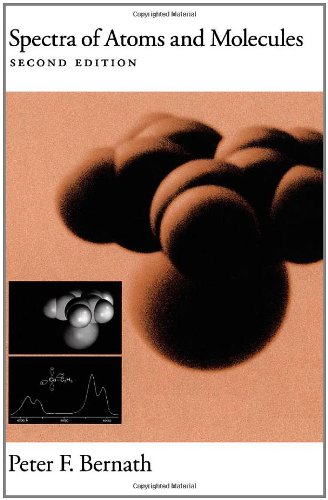Spectra of Atoms and Molecules book
Par calzada eric le jeudi, septembre 22 2016, 06:36 - Lien permanent
Spectra of Atoms and Molecules by Peter F. Bernath


Spectra of Atoms and Molecules Peter F. Bernath ebook
ISBN: 0195075986, 9780195075984
Page: 405
Publisher: Oxford University Press
Format: pdf
Using atomic force microscopy, chemist Felix Fischer and physicist Michael Crommie have for the first time captured images of molecules before and after they react, which will allow chemists to better tune reactions to get the products they want. Stark effect, the splitting of spectral lines observed when the radiating atoms, ions, or molecules are subjected to a strong electric field. The Atomic Universe : Spectra as Probes of Cool Gas. The discovery involved trapping the new molecules in a spider web-like laser scaffold, which allowed Zelevinsky to measure the molecule's spectral frequency at a very high resolution. Up-to-date overview of principal directions in this rapidly expanding field of dielectric spectroscopy and its applications to science and technology given by leading experts. Atomic, Molecular, Optical & Plasma Physics. Spectroscopy of Solar and Stellar Plasma. Single atoms or molecules emit light in a form called line spectra. �You have to deduce that by taking nuclear magnetic resonance, infrared or ultraviolet spectra. Now researchers from China, Spain and Sweden have combined STM with another method called Raman spectroscopy to determine not just the shape, but also the constituent atoms of a single molecule. An atom or molecule that is reasonably isolated (such as in a gas at ordinary temperatures and pressures) will radiate a discrete set of frequencies called a line spectrum. Carbon is one of the most abundant atoms in space and scientists believe that the spectral changes across these maps trace the molecular evolution of carbon across the universe. LIBS spectroscopy identifies the elemental breakage emissions (atomic and molecular) generated after excitement from a high energy laser 'spark'. It is more like a puzzle, putting all the information together and then nailing down what the structure likely is.